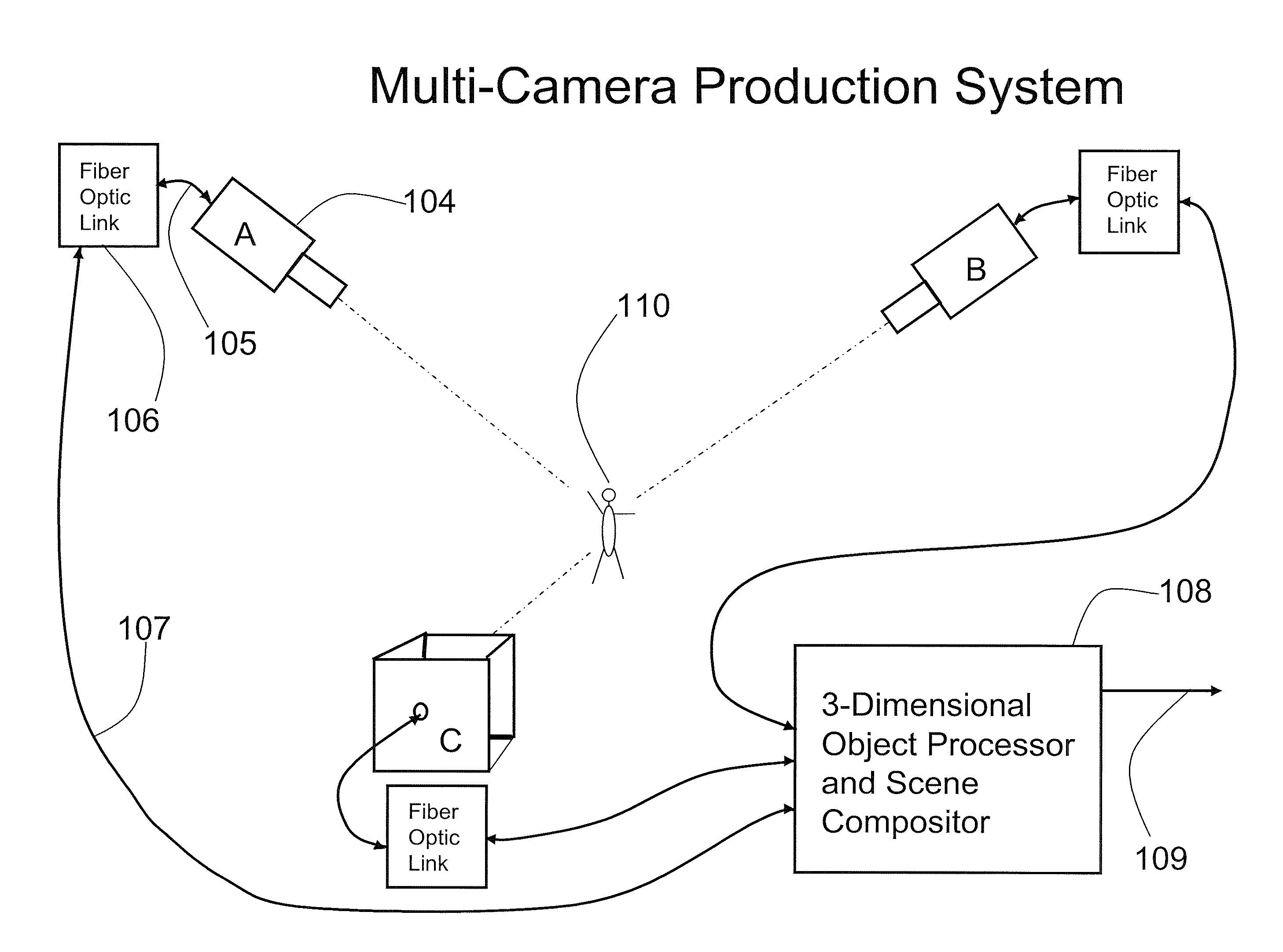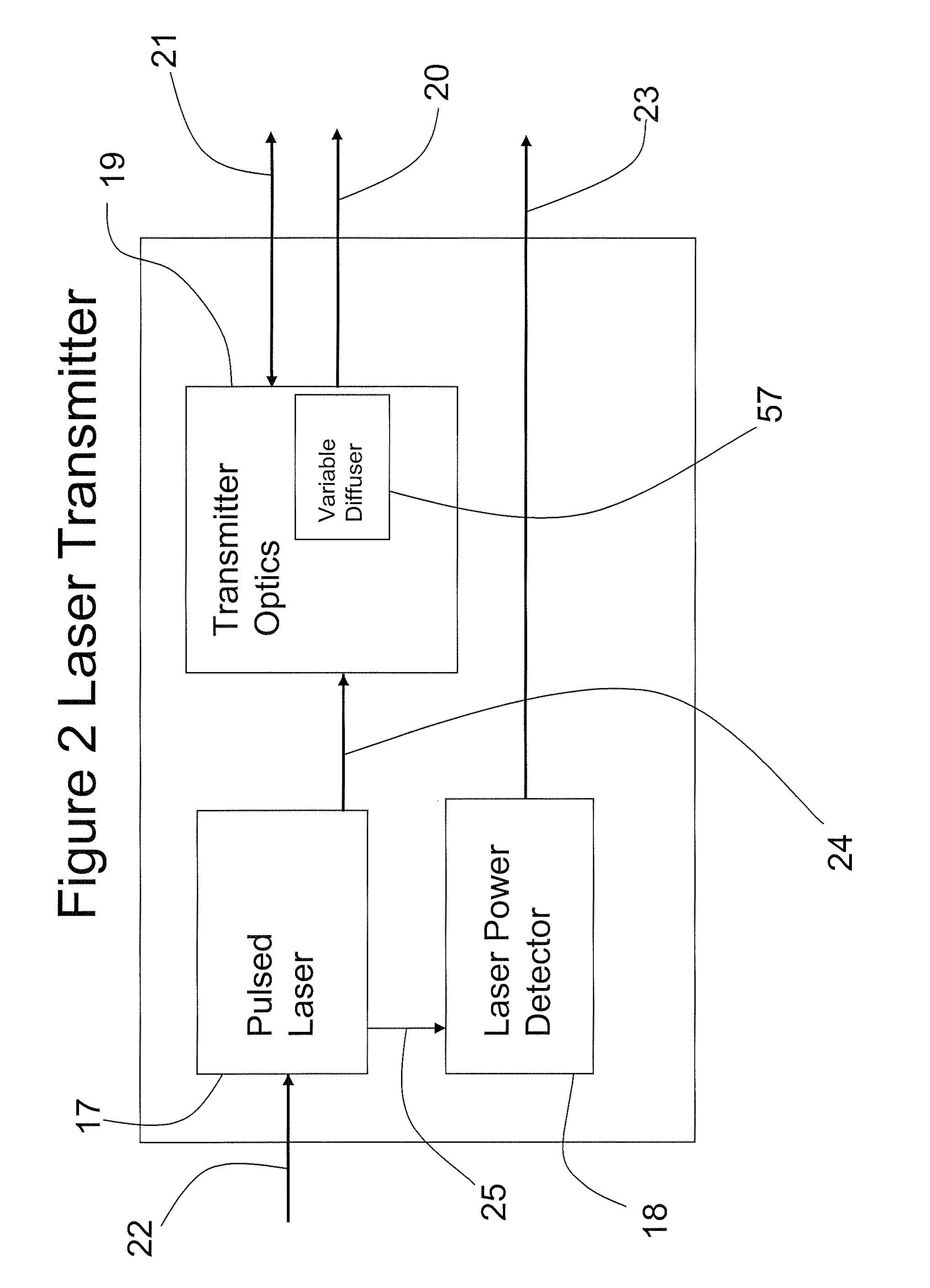3-dimensional hybrid camera and production system
- Summary
- Abstract
- Description
- Claims
- Application Information
AI Technical Summary
Benefits of technology
Problems solved by technology
Method used
Image
Examples
Embodiment Construction
[0030]A preferred embodiment of the present invention, the 3-Dimensional Hybrid Visible and Infrared Laser Radar Camera (the “hybrid 3-D camera”) is depicted in block diagram form in FIG. 1. The system is designed to produce a 3-dimensional image from a conventional 2-D video or still camera 2, based on a conventional CMOS or CCD focal plane array, coupled with a flash laser radar. The flash laser radar is capable of producing range and intensity data for any object or scene within its field of view from a single pulse of laser transmitter 1, in conjunction with system controller 3, and infrared optical receiver 4. The shorthand term “flash laser radar” may be used herein to refer to laser transmitter 1, system controller 3, and infrared optical receiver 4 collectively, and to their mutual operation.
[0031]Image processor 5 signals 2-D camera 2 when it is ready to accept data (2DIN_RDY) via bidirectional electrical connection 13, and then receives 2-D image data from the 2-D camera 2...
PUM
 Login to View More
Login to View More Abstract
Description
Claims
Application Information
 Login to View More
Login to View More - R&D
- Intellectual Property
- Life Sciences
- Materials
- Tech Scout
- Unparalleled Data Quality
- Higher Quality Content
- 60% Fewer Hallucinations
Browse by: Latest US Patents, China's latest patents, Technical Efficacy Thesaurus, Application Domain, Technology Topic, Popular Technical Reports.
© 2025 PatSnap. All rights reserved.Legal|Privacy policy|Modern Slavery Act Transparency Statement|Sitemap|About US| Contact US: help@patsnap.com



